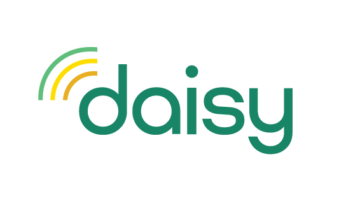Following breakout successes like the app-enabled Pebble E-Paper Watch and 3D printer Printrbot, which have raised over $10 million and $830,000 from everyday Internet users respectively, consumer electronics innovators are increasingly labeling crowdfunding the future of investment.
The recent passage of the JOBS Act, which allows firms to raise up to $1 million by selling shares in privately-held ventures, with some restrictions, only further promises to ignite interest amongst leading high-tech manufacturers. However, while the coming year will bring a flood of new products, online fundraising platforms, and clever alternatives to courting venture capital, it bears remembering. Not all CE products and projects are well-suited to the format, even as competition and consumer expectation continue to rise, ensuring that, for technology-focused businesses, new opportunities will be accompanied by growing challenges.
Still, risks may easily justify rewards: From a commercial standpoint, crowdfunding’s benefits are certainly proncounced. Using sites such as Kickstarter, Indiegogo, RocketHub, Crowdfunder, MicroVentures and an ever-expanding host of alternatives, business owners and garage tinkers alike can publicly showcase projects via text descriptions and video pitches, and solicit Internet users for donations.
Whether offering investors a share of profits (note: SEC regulations here remain pending), or simply trading product preorders or personalized rewards (i.e. hand-signed collector’s editions) in exchange for pledges, such vehicles don’t just provide businesses the upside of connecting directly with customers. They also let CE leaders create greater empathy with end-users; right-size projects and better forecast market demand; focus test feature sets, messaging and marketing; cultivate community; generate positive cash flow; and begin building brand awareness all from day one, or even before.
Functioning as both product showrooms and project incubators/testing labs, crowdfunding sites and services allow you to more accurately gauge consumer interest, position supporting promotional activities, and craft production scope and pipelines than traditional development approaches. Moreover, they also democratize the world of product development and distribution, by allowing the public to determine projects’ ultimate viability by directly voting with their wallets. This process proves a marked contrast to traditional publishing methods, under which a small group of wealthy influencers or forward-looking corporations attempt to speculate on current and future market needs.
Much as this paradigm shift challenges the status quo, and potentially saves CE makers from wasting time taking projects beyond the concept or prototype phase for which there is little demand though, it must be recognized. Current crowdfunding efforts are primarily consumer marketing campaigns at heart, with hardware and software products’ or services’ whose values are easily communicated and visually demonstrated (and which appeal to either a broad cross-section of viewers or small but loyal niche) likeliest to succeed. Similarly, whereas B2B plays and commercial enterprises with formalized business plans will surely gain more traction following the debut of equity-driven crowdfunding platforms, again, clearly demonstrating projects’ value proposition will be a crucial facet of most campaigns going forward.
Important to note: Competition continues to rise in terms of project scope, quality and production values, even as audience attention and appetite becomes growingly indifferent and fractured. True, dollars and eyeballs continue to flood into the crowdfunding space. But with every CE manufacturer worth their weight in silicon contemplating the field’s upsides, even as donor fatigue grows following a rising parade of hopeful new sites and projects, warning signs cannot be ignored. To succeed with crowdfunding, tomorrow’s leading CE projects won’t just need to ask for reasonable sums relative to their respective industries, and typically come from qualified sources with which contributors can empathize. They’ll also require a unique angle and clearly-communicable selling points, and the ability to fuel viewer discovery and viral pass-along.
While household names can, and inevitably will, attempt to succeed crowdfunding, it bears considering as well – above all else, authenticity will be paramount. Rather than experienced investors, CE makers will essentially be making appeals to a wide cross-section of everyday end-users, or working professionals with disposable income to spare. To convince them to dip into their pocketbook, they’ll need to answer several key questions including: Why this product or project? Why now? What unique benefits does it offer? Why are you the person or team to create it? And why must I, as an end-user, act now? Even for those selling trade-focused products and services, or for whom other businesses are key customers, it bears recalling. Within the context of crowdfunding, as important as the business plan is how you present your project, how effectively you can demonstrate its upsides, and how quickly you can set it apart from the pack.
Key tips to keep in mind when planning a crowdfunded effort:
Conduct extensive planning and research. Study both successful and failed projects to see which ideas, rewards, and promotional activities resonate. Understand the makeup and size of your target audience, where fans can be found online and how to best connect with them. Be realistic about project scope and feature set, and budget conservatively when plotting finances and estimating how many backers you can engage.
Perfect your pitch. Test it out on objective bystanders, and refine commentary until you concisely describe your project in 20 seconds or less. Differentiate by focusing on one to three key features or unique benefits, which all supporting project descriptions and visuals should reinforce.
Be realistic with funding targets. Ask for a reasonable minimum. The lower the amount requested, the more achievable fans will feel the goal is, and likelier they are to contribute Concentrating only on core project components helps cut costs, and provides greater focus. If it’s not a must-have feature or benefit, save it for when you exceed initial funding goals.
Begin preparations weeks in advance. Plot a running promotional strategy that starts at launch (or sooner, if you have an existing fan base you can tease about upcoming ventures), and runs throughout the entire duration of your campaign. From video clips to screenshots, sketches and social media accounts, start assembling your arsenal of promotional tools and assets before debuting. Consider who you can call on for support, and garner their assistance before starting. It’s imperative to have a game plan in place so you can rocket out of the gate on day one.
Say more with less. Use catchy headlines to draw the eye and break project homepage descriptions into brief, easily digestible text summaries. Focus on no more than three key sales points and unique benefits. With videos, grab viewers’ attention in the first ten seconds, and keep clips under three minutes in length. Quickly describe your project, why it matters, how you plan to accomplish it and what qualifies you for the job.
To learn more on this subject, CEA’s Small Business Council is hosting a webinar by Scott Steinberg, “Crowdfunding Your Business – The Future of Start-Up Investment,” on Thursday, June 21 from 2:00 – 3:00 PM ET. Registration is free for CEA members. Non-members can pay $99.00 to attend. Click here to register or contact the CEA webinar team at 703-907-4354.
Professional keynote speaker Scott Steinberg is a leading expert on leveraging new technology trends to enhance business strategy and family life. A noted industry consultant and bestselling author, his new book The Crowdfunding Bible is a free to download at www.CrowdFundingGuides.com, or in eBook form on Apple, Nook and Sony Reader devices.













